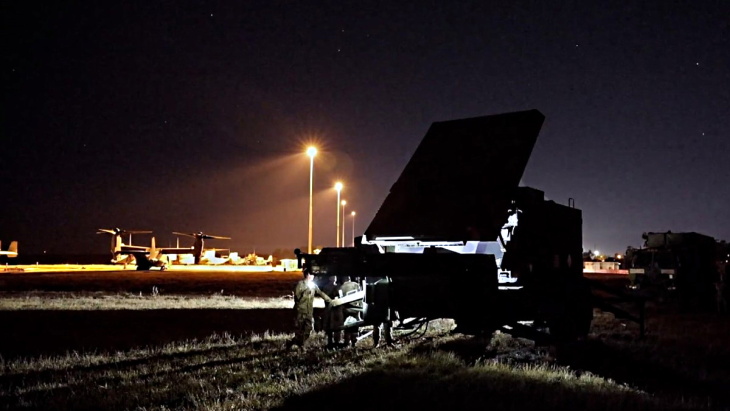The shipment of kit from Australia and France was the first to Ukraine through the IAEA's Response and Assistance Network (RANET), which was created in 2000 to provide assistance in the event of a nuclear accident or radiological emergency.
Australia and France are among 12 states registered in RANET that have so far offered to provide specialised equipment to Ukraine, in response to the country's request for equipment it said it needed for the safe and secure operation of its nuclear facilities.
The delivery consisted of more than 160 dosimeters and monitors for safety and radiation protection as well as hundreds of items of personal protective equipment, including full body suits, masks and disposable gloves and covers.
The IAEA's Grossi said: "This is a major step forward in our joint work to help Ukraine reduce the risk of a nuclear accident or a radiological emergency. I’m very grateful for the generous support provided by Australia and France, as well as by many other countries that have also offered to assist. Despite significant logistical and other hurdles, the equipment has now arrived in Ukraine where it will be put to good use by our Ukrainian counterparts.
"More safety and security-related equipment will be transported to Ukraine in the coming months, thanks to substantial support from countries offering equipment and others providing extra-budgetary contributions for our assistance. The needs are large, and I encourage other countries to also step forward with support for our crucial work in Ukraine."
He said that "significant progress" had been made in taking steps to ensure safety and security "but a lot remains to be done". One continuing growing area of concern has been the inability of IAEA inspectors to visit Ukraine's largest nuclear power plant - Zaporizhzhia - which is being run by its Ukrainian staff, but under the control of the Russian military since early March.
Ukraine informed the IAEA this week that it was "an extremely difficult" situation there because of the "constant pressure" on its employees. The IAEA has been trying to arrange for a mission to the plant for more than four months.
The State Nuclear Regulatory Inspectorate of Ukraine, welcomed the delivery of equipment from Australia and France: "We express our sincere gratitude to colleagues from partner countries, employees of the IAEA, employees of logistics companies, who, with faith in safety and cooperation, ensured the provision, transportation, documentation and delivery of necessary items, devices and equipment from door to door, with high respect to the personnel of nuclear and radiation facilities of Ukraine, which remains committed to the priority of nuclear safety even in war."
There are four nuclear power plants in Ukraine, including Zaporizhzhia. There are a total of 15 units across the four plants, and nine are currently connected to the grid, with the others shut down for regular maintenance ore held in reserve.

.jpg)



_69218.jpg)

_50545.jpg)
_28367.jpg)
_76087_55556.jpg)




